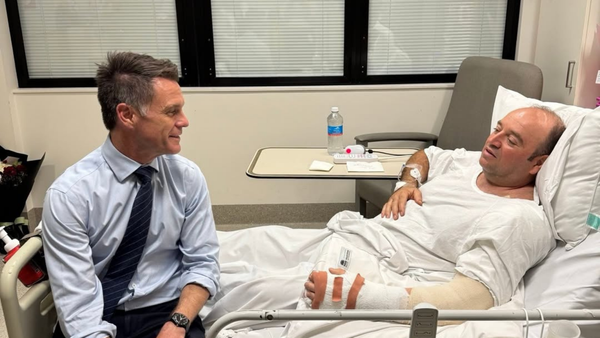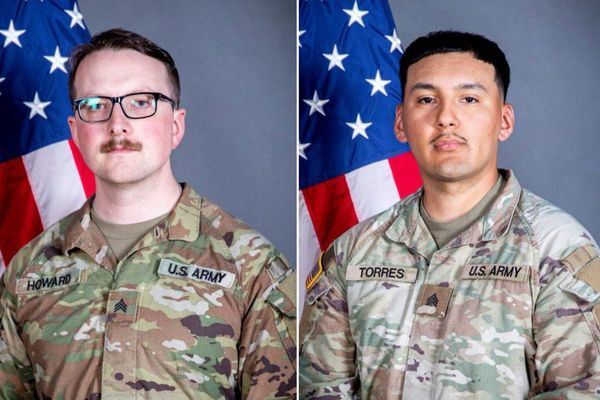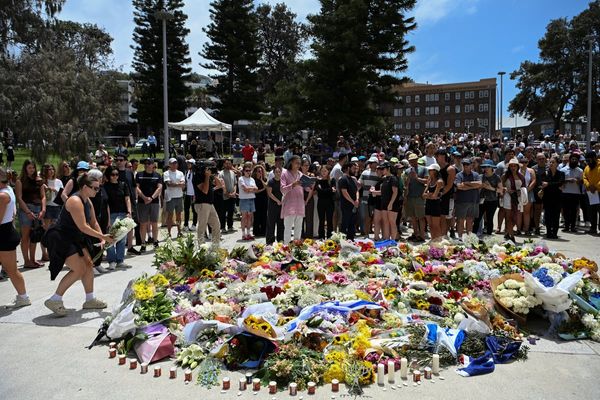
Patrick Vaughan, who has died aged 87, was a pre-eminent epidemiologist and a director of the Tropical Epidemiology Unit at the London School of Hygiene & Tropical Medicine (LSHTM). He authored more than 120 papers and gave health advice at the highest level: to the World Health Organization, governments, the World Bank and the NHS. He also advised charities, including the organisers of Live Aid, who in 1985 wanted to know how best to channel the £150m they had raised to relieve famine in Ethiopia.
All this he achieved despite having reached the age of 12 with little formal education and being barely able to read. Nevertheless, the headteacher at Bishop Wordsworth’s grammar school in Salisbury offered him a place, conditional on his catching up with his classmates within a year. He succeeded, transcending his chaotic childhood to gain four A-levels and, in 1955, a place at Guy’s Hospital medical school in London. William Golding, a teacher at the school, reputedly said that Vaughan’s strength of character inspired Piggy, one of the characters in his 1954 novel Lord of the Flies.
Epidemiologists study why poor health occurs in a population, suggesting practical solutions. Clinical doctors can improve health one patient at a time, but Vaughan was passionate about addressing health at a population level in low-income countries. In 1966, after qualifying as a doctor and studying for a diploma in tropical medicine from the LSHTM, he spent two years in Papua New Guinea and then moved to Tanzania. It had recently shaken off its colonial past and there was an atmosphere of hope and optimism. Vaughan spent four years in Dar es Salaam teaching public health.
In 1973 he returned to the UK and lectured in public health at the University of Nottingham before moving in 1975 to the LSHTM, where he worked for 20 years. He led the Tropical Epidemiology Unit (now the International Statistics and Epidemiology Group) and in 1979 established its Centre for Evaluation.
When Vaughan joined the LSHTM, it was narrowly focused on cures for tropical diseases. That changed when he brought in a wider approach to health. He used multidisciplinary teams to consider, for example, vaccine programmes, from every angle: how to fund them, how to transport vaccines and keep them cool in rural areas with scant refrigeration, and how to encourage local people to buy in to the programmes. His teams included social scientists, anthropologists, nurses, doctors and more.
His colleague Gill Walt said it was an exciting time: “To tackle disease, you need to think widely about finance, politics and organisations. Patrick always asked the question – how do you reach people? He wanted to help people in rural areas access services, for example, by bringing in village health workers.”
Vaughan fervently believed in a two-way exchange of knowledge, founding the journal Health Policy and Planning in 1986 to discuss ideas, and he encouraged people from low-income countries to come to the LSHTM. He also used to tell his students in London that the most important thing was to get out into the field and see first-hand how people lived.
With his team, Vaughan worked on many projects, including one in 1988 proving the efficacy of a homemade oral rehydration solution for children with diarrhoeal diseases in Bangladesh. He took a quiet satisfaction in helping improve health in Brazil by contributing to government policy to encourage breastfeeding and focus on a child’s first 1,000 days (from conception to their second birthday). Vaughan was a deep, prescient thinker, anticipating health issues in low-income countries that at the time were barely on the horizon, for example diabetes and issues to do with ageing and urbanisation.
He was born in Penzance, Cornwall, the son of Ellaline (nee Norwood) and Gerald Vaughan. His father had inherited wealth and was an outspoken anarchist and pacifist. After Patrick’s birth, his mother had postnatal depression, which triggered schizophrenia. Internal voices urged her to leave home and the young family moved to the Bruderhof Christian community in the Cotswolds. But her illness worsened and she was taken to St Lawrence’s hospital in Bodmin, where she remained for 40 years – and her husband divorced her. Vaughan grew up believing his mother was dead. His father only told him that she was alive when he was 21 and studying psychiatric illness at medical school.
While at the Bruderhof community, Gerald took up with Inge Mendelsohn, a Jewish refugee from Germany who was running the creche. The couple were asked to leave and they returned with the infant Patrick to Cornwall. When the second world war broke out in 1939, Mendelsohn was interned as an enemy alien and Gerald began a new relationship, with Pip (Penelope) Walker, whom he had initially engaged to look after his son.
She and Gerald had three sons, Jasper, Mark and Paul, but Pip was more interested in art than children, and it fell to Patrick to take care of his half-brothers. At one point he became a ward of court when a neighbour reported the neglect of the children.
After the war, Inge was released from internment. Gerald left Pip and resumed his relationship with her and they later married. They moved to Hampstead in London, where Gerald liked to hang out in pubs drinking with the poet Dylan Thomas and Patrick roamed the heath largely left to his own devices. He did, however, briefly attend a private school – Burgess Hill – in Hampstead, where he appreciated the routine and felt safe. But he had to leave in 1949 because Gerald’s money had drained away on drink and quixotic schemes such as giving farmland to pacifists.
The family decamped to a makeshift dwelling on the fringes of the New Forest in Hampshire, and scraped by. But the headteacher at Burgess Hill had spotted Patrick’s potential and wrote to Bishop Wordsworth school recommending the boy, and he was asked to come in for an interview, which put his life on an altogether better course.
In the latter part of his career, Vaughan was seconded in 1995 for three years to the International Centre for Diarrhoeal Disease in Bangladesh, focusing on cholera and Aids, and was a visiting professor at universities in Brazil and Kenya. At home, he was a public health adviser to the UK Department for International Development and to the Cabinet. He continued to write into his 80s, including co-writing Practical Epidemiology in 2021, a key textbook for health professionals. In 1998 he was appointed CBE.
In 1960 he had married Patricia Pooley, a teacher, and they had two sons, Nicholas and Kit, before divorcing in the early 1970s. While based in Nottingham he began a relationship with Pauline Macaulay, a social anthropologist and teacher, who was also a single parent, with three children. They became a couple in 1975, and moved to London with their blended family.
In 2006, they married and retired to Dorset. The couple later took care of two Pakistani girls, Kainat Riaz and Shazia Ramzan, who had been on the same bus as Malala Yousafzai when she was shot by the Taliban in 2012 and were wounded. Vaughan’s son-in-law, the politician Gordon Brown, had helped bring all three to the UK, where Kainat and Shazia attended a boarding school and stayed in the holidays with Vaughan and Macaulay, whom they regarded as honorary grandparents.
Vaughan is survived by his wife, their five children and 11 grandchildren, and by his half-brothers, Mark and Paul.
• John Patrick Vaughan, epidemiologist and doctor, born 27 December 1937; died 26 July 2025







